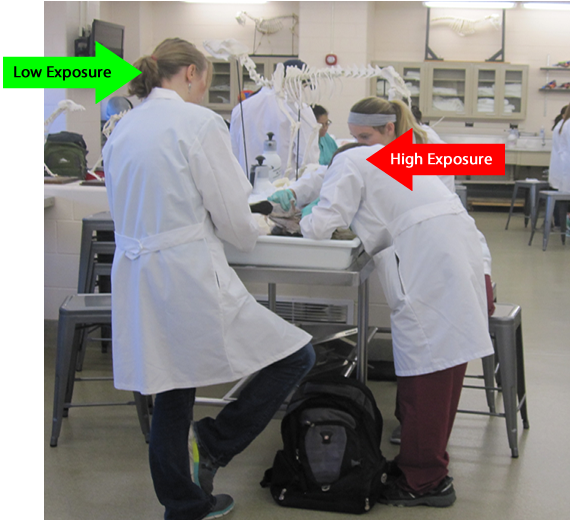Formaldehyde Guidelines for Student Anatomy Labs
Formaldehyde Health Effects
Formaldehyde is a SENSITIZING AGENT –a chemical that causes a substantial proportion of exposed people or animals to develop an allergic reaction in normal tissue after repeated exposure to the chemical. Once sensitized, exposure to very low concentrations can initiate an allergic response, typically a rash.
- Dermal (Skin) Health Effects: Exposure to all forms (gas, liquid, solid) may result in irritation, discoloration, scaling, thickening, numbness, and burns to skin.
- Inhalation - Nasal, throat, and irritation of the airways. Higher levels cause eyes to burn and water.
Hazard Mitigation
Engineering Controls
Each anatomy lab is designed with a high ventilation rate to ensure concentrations of formaldehyde remain low. It is important to not to block any ventilation exhausts or supply vents with backpacks, books, equipment, etc.
Work Practices
- Stand as far away from tissues/solutions containing formaldehyde as possible.

- Share dissection load to minimize exposure time.
Personal Protective Equipment
- Safety glasses, nitrile gloves and a lab coat are required at ALL times when performing dissections.
- If there is a lot of liquid, barrier sleeves must be worn in addition to a lab coat.

